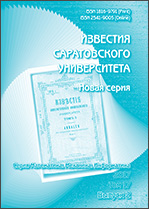|
This article is cited in 9 scientific papers (total in 9 papers)
Scientific Part
Computer Sciences
Mathematical models for evaluation of the higher education system functions with DEA approach
A. A. Firsova, G. Yu. Chernyshova
Saratov State University, 83 Astrakhanskaya St., Saratov 410012, Russia
Abstract:
The purpose of this research is to develop the Data
Envelopment Analysis (DEA) methodology for modeling of the
assessment of the regional higher education systems effectiveness.
The importance and topicality of this study is based on the
increasing role of universities in the economic development of
regions and countries in recent decades as well as the need to
develop approaches for assessing the university effectiveness, and
using mathematical models and methods for these goals. The novelty
of the research is the formation of the DEA model and its
application to the analysis of regional higher education systems'
effectiveness. The hypothesis of uneven development of regional
higher education systems was tested from the standpoint of
functional approach; the higher education systems' effectiveness
has been calculated and the ranking of Russian regions was
performed by different DEA models. As a result of the DEA
modeling, a quantitative effectiveness assessment was carried out,
and a set of Russian regions was ranked according to three basic
university functions: education, science, and regional partnership.
Conclusions about the level of effectiveness and development strategy of
regional higher education systems in Russia have been drawn.
Key words:
effectiveness assessment, decision making, data envelopment analysis, regional higher education system.
Received: 14.02.2019
Accepted: 10.04.2019
Citation:
A. A. Firsova, G. Yu. Chernyshova, “Mathematical models for evaluation of the higher education system functions with DEA approach”, Izv. Saratov Univ. Math. Mech. Inform., 19:3 (2019), 351–362
Linking options:
https://www.mathnet.ru/eng/isu813 https://www.mathnet.ru/eng/isu/v19/i3/p351
|

|




 Contact us:
Contact us: Terms of Use
Terms of Use
 Registration to the website
Registration to the website Logotypes
Logotypes







 Citation in format
Citation in format 
